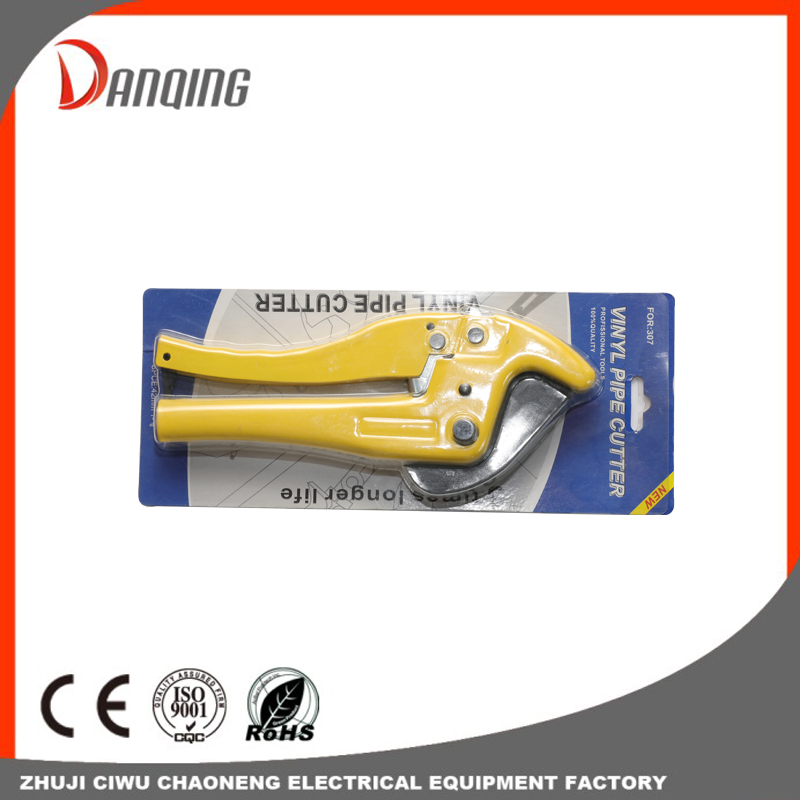Precautions for using plastic pipe cutter
Before use 1. Choose a suitable cutter according to the […]
Before use
1. Choose a suitable cutter according to the diameter of the pipe to be cut;
2. Check the condition of the cutter, blade and screw rod, whether there are cracks in the cutter;
3. Clean the pipe, clamp the cut pipe firmly with pressure tongs, measure the cutting length, and make a record.
When in use
1. Keep cutting the knife in one hand, and rotate the adjustment handle with the other hand to make the opening suitable;
2. Insert the pipe, align the blade with the mark, and make a light circle;
3. Lubricate the surface of the pipe to be cut and the movable parts of the pipe cutter;
4. When cutting, the pipe should be firmly clamped, and the cutting blade and roller should be perpendicular to the pipe;
5. During the initial cutting of the cutter, the amount of knife feed can be slightly larger, and the amount of knife feed will gradually decrease each time;
6. Each time the knife is fed in, the direction of rotation of the cutting knife is the same as the opening direction, it cannot be reversed, the force must be even, not too strong, and the knife cannot be shaken left and right;
7. It is advisable that the feed depth does not exceed the screw half revolution each time;
8. Add force once every rotation of the cutter, and add oil once as appropriate;
9. When the pipe is about to be cut, use light force, hold the pipe with one hand, and cut it slowly.
How to use a heavy pipe cutter
1. The T-shaped handle rotates 1/4 circle every time it feeds, which can ensure the service life of the cutter wheel.
2. Then rotate the pipe cutter 360 degrees around the pipe and operate it back and forth.
3. Each overfeed will reduce the life of the cutter wheel and pin.
4. Frequent lubrication of the cutter wheel and pin shaft can also extend its service life.
Precautions for the use of pipe cutters:
(1) Choose a pipe cutter of the appropriate specification according to the pipe diameter to be cut, so as to avoid the minimum distance between the blade and the roller being less than the minimum pipe cutting size of this specification cutter, causing the slider to leave the main guide rail;
(2) Check whether the cutter, afterburner screw, cutter frame centralizer and other parts are in good condition;
(3) Clamp the pipe to be cut firmly with pipe pressure tongs, and the cutting blade and roller are perpendicular to the pipe to prevent the cutting blade from breaking;
(4) Scribe a line according to the required length of the pipe to be cut, loosen the knife edge, clamp the cutting knife on the pipe, align the blade with the scribe line, and use an afterburner screw to gradually enter the knife;
(5) Do not use too much force for each feed, and the depth of feed should not exceed half a revolution of the screw each time, and the feed can be slightly larger during the initial cutting to cut deeper grooves;
(6) A small amount of lubricating oil should be added to each movable part of the pipe cutter and the surface of the pipe to be cut to reduce friction.


